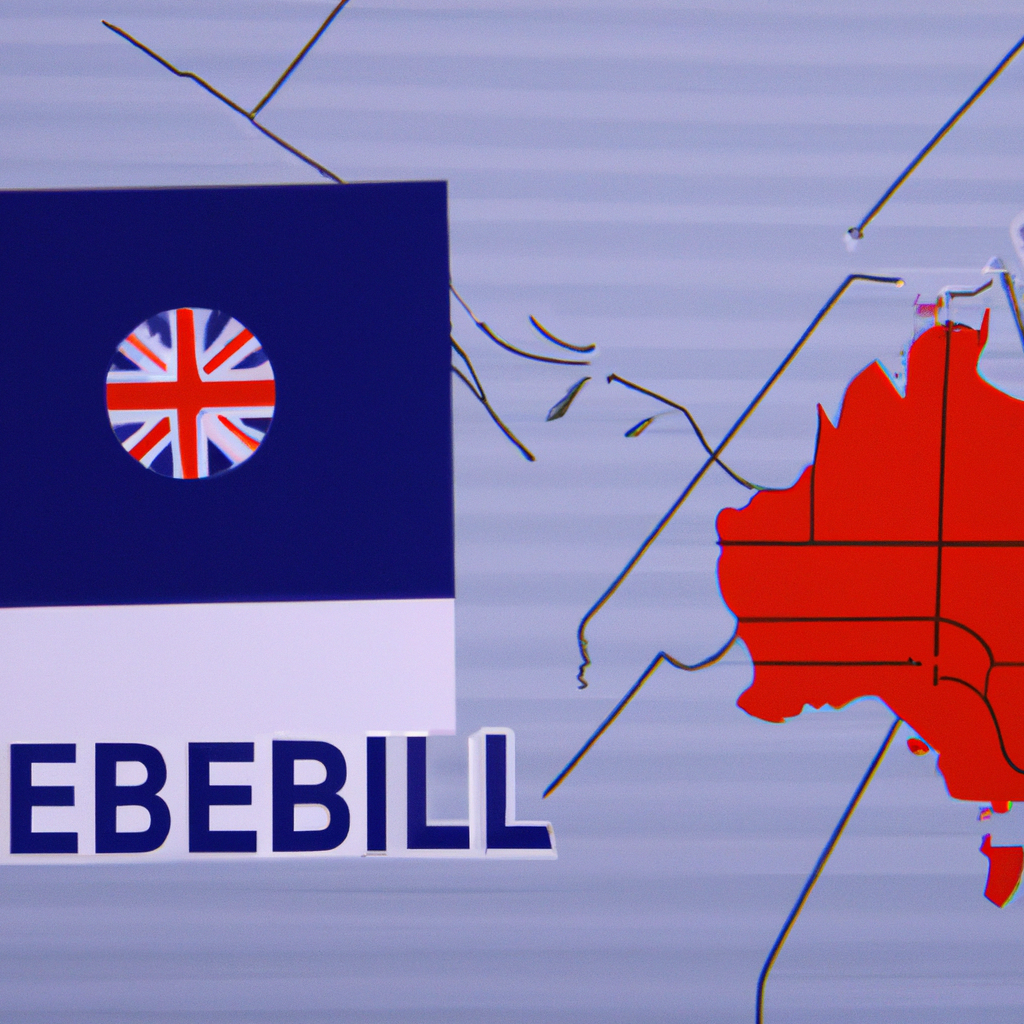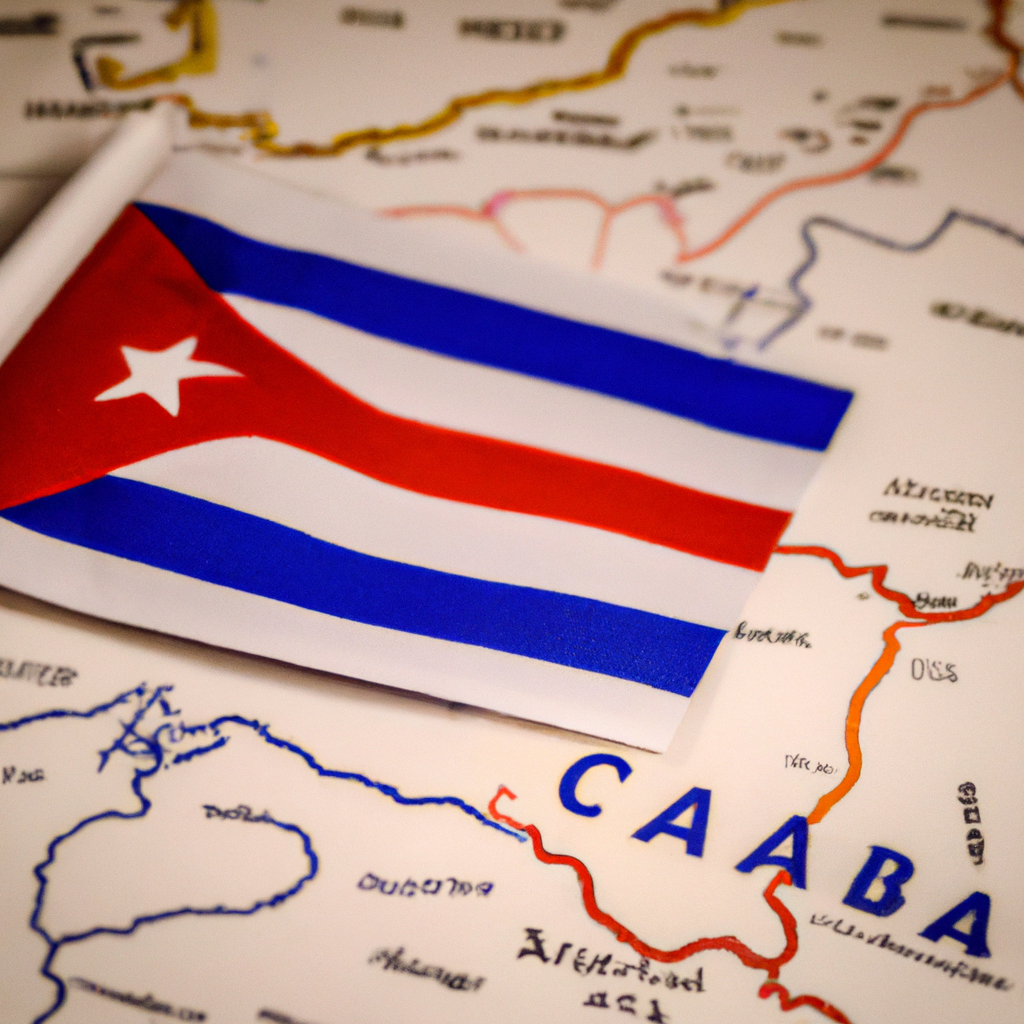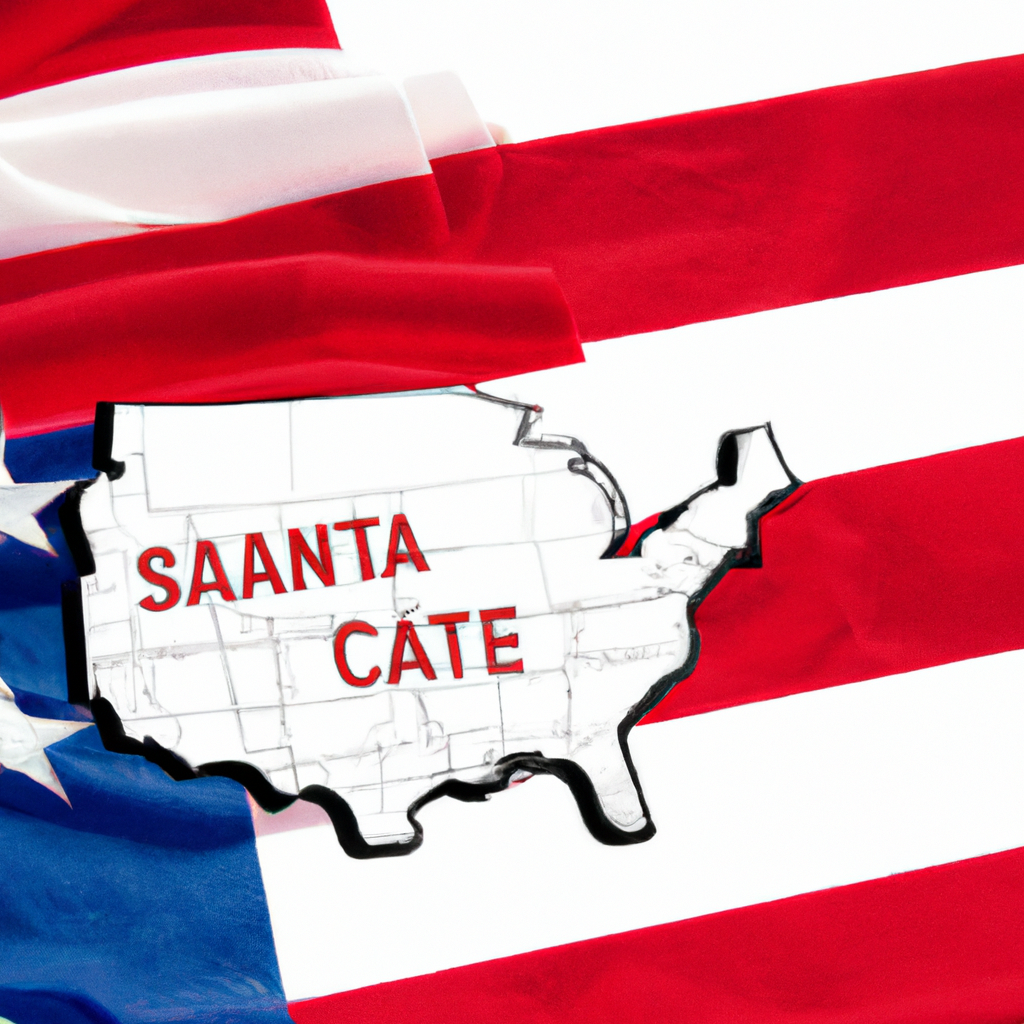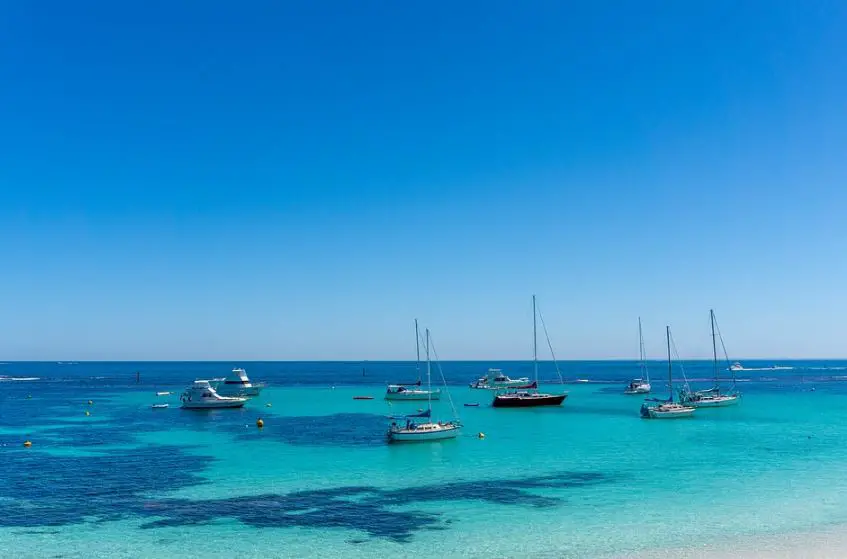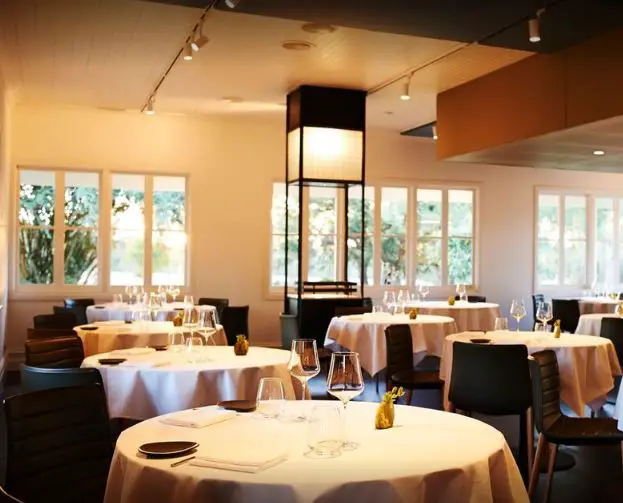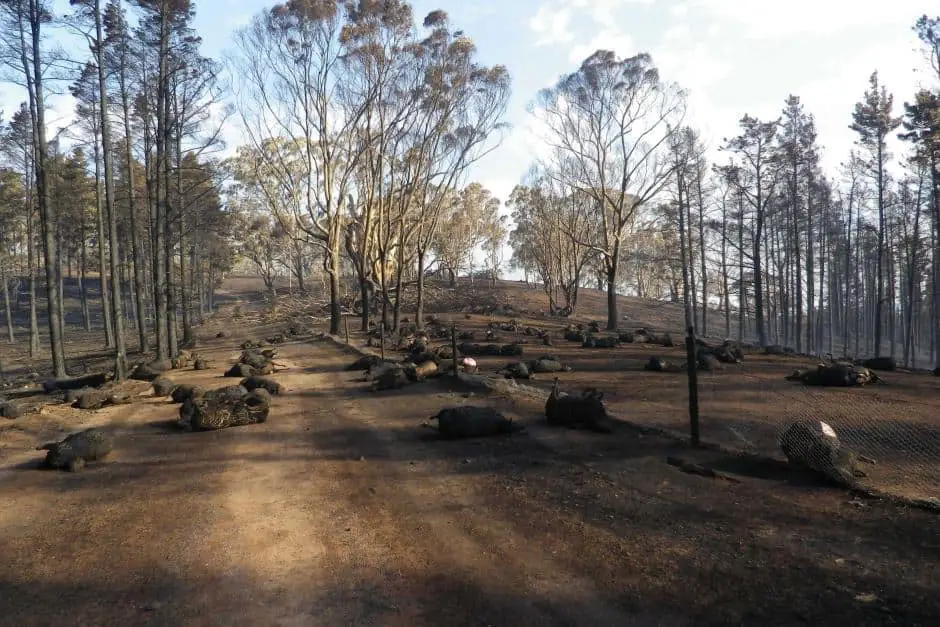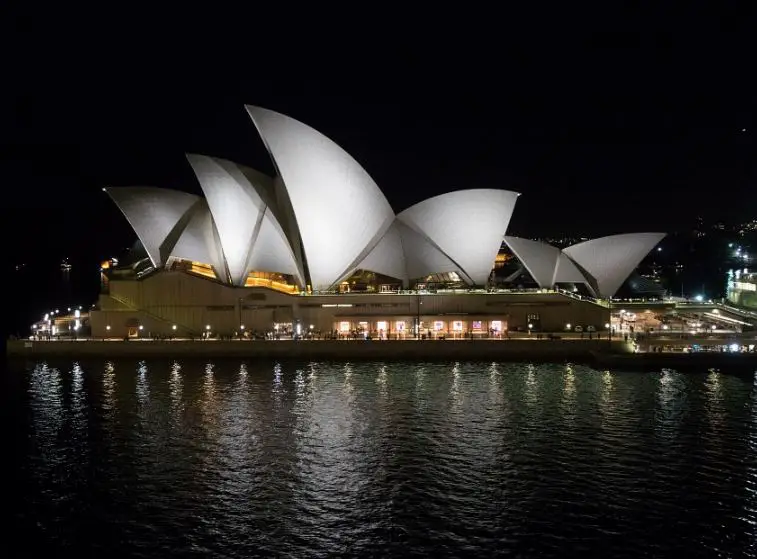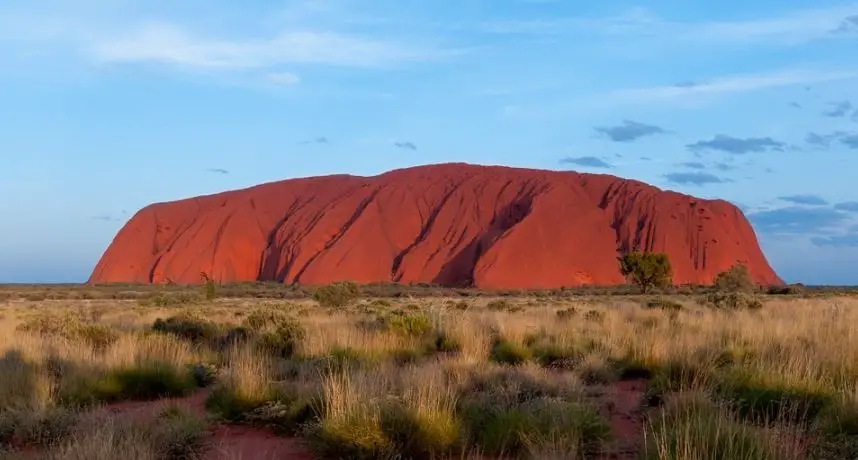Melbourne, Australia: Interesting Facts,History, Things to do,Why to Visit
Post ByAdequate Travel
Melbourne, Australia is an exciting, vibrant city full of interesting facts, history and activities to do. It is the cultural capital of Australia boasting some of the best contemporary and classical art galleries, museums, and food. Its diverse population consists of European, Asian and international immigrants that bring their unique culture to the city. You can explore the city by walking through the iconic Victorian terrace buildings, ride a tram, visit some of the best beaches in the world or take a leisurely stroll through the Queen Victoria Markets. Melbourne is famously known for its music, theatre, and live comedy scene. With its shopping arcades, historical laneways, and growing street art, you can never be bored in this city. If you're looking for an eclectic mix of culture, arts, and entertainment, a visit to Melbourne is a must.
Australia is a country located in the southern hemisphere, comprising the mainland of the Australian continent, the island of Tasmania, and numerous smaller islands. It is the world's sixth-largest country by total area. Australia is known for its unique wildlife, stunning natural landscapes such as the Great Barrier Reef and Uluru, as well as vibrant cities like Sydney and Melbourne. It has a parliamentary democracy and a stable economy, mainly driven by industries such as mining, agriculture, and tourism. Australia is also known for its love for sports, particularly cricket, rugby, and Australian rules football.Discover unique facts about australia, a destination filled with rich history and natural beauty.
Interesting facts
1. Unique Wildlife
Australia is home to a diverse range of unique wildlife, with many species found nowhere else in the world. One well-known example is the kangaroo, which has become an iconic symbol of the country. Other fascinating animals include the platypus, Tasmanian devil, koala, and emu.- Kangaroos are marsupials that have powerful hind legs and can hop at high speeds.
- The platypus is a monotreme, laying eggs and producing milk to nourish its young.- The Tasmanian devil is the world's largest carnivorous marsupial and is known for its aggressive temperament.- The koala is a herbivorous marsupial that spends most of its time sleeping and eating eucalyptus leaves.- The emu is the largest bird in Australia and has strong and long legs, allowing it to run at high speeds.2. Great Barrier Reef
The Great Barrier Reef, located off the northeastern coast of Australia, is the largest coral reef system in the world. It stretches over 2,300 kilometers and is visible from space. This UNESCO World Heritage Site is renowned for its stunning beauty and biodiversity, with thousands of different species of fish, coral, and marine creatures calling it home.- The Great Barrier Reef is composed of over 2,900 individual reefs and 900 islands.
- It is a popular tourist destination for snorkeling, scuba diving, and boat tours.- It is home to colorful coral formations, including the iconic Great Barrier Reef Marine Park.3. Ancient Indigenous Culture
Australia has a rich and ancient Indigenous culture that dates back tens of thousands of years. The Aboriginal and Torres Strait Islander peoples are the traditional owners of the land and have a deep spiritual connection to it. They have a unique art, language, and storytelling tradition that continues to thrive today.- Aboriginal rock art can be found in various locations across the country, depicting stories and cultural practices.
- The Dreamtime, or Creation Time, is a key concept in Indigenous culture that explains the origins of the land, animals, and people.- Traditional ceremonies, such as the corroboree, are still performed by Indigenous communities.4. Massive Landmass with Diverse Landscapes
Australia is the sixth-largest country in the world and has a diverse range of landscapes, from vast deserts to lush rainforests and pristine beaches. It is known for its stunning natural beauty and unique geological formations.- The Outback is a vast and arid region that covers most of the country's interior, characterized by red earth, sparse vegetation, and iconic landmarks like Uluru.
- The Great Dividing Range is a mountain range that runs along the east coast of Australia, offering breathtaking views and opportunities for hiking and skiing.- The Daintree Rainforest in Queensland is one of the oldest rainforests in the world and is home to a diverse range of plants and animals.From museums to parks,australia tourist attractions offer something for everyone, making it a versatile destination for all type of tourists.1. Indigenous History
Australia has a rich indigenous history that dates back over 60,000 years. The Aboriginal and Torres Strait Islander peoples are the original inhabitants of the continent and have a diverse and complex cultural heritage. They have a deep connection to the land, with unique languages, traditions, and spiritual beliefs.
Examples:
- Indigenous Australians have a strong oral tradition, passing down stories and knowledge from generation to generation.
- Rock art and cave paintings found across Australia provide evidence of their ancient culture.
2. European Colonization
European exploration and colonization of Australia began in the 17th century. In 1770, British explorer Captain James Cook claimed the eastern part of the continent for Britain. The British established the penal colony of New South Wales in 1788, sending convicts from the overcrowded prisons of England. This marked the beginning of British colonization and the eventual establishment of the separate Australian colonies.
Examples:
- Convict transportation continued until 1868, with approximately 162,000 convicts sent to Australia.
- The establishment of other colonies such as Victoria, Queensland, South Australia, and Western Australia occurred during the 19th century.
3. Federation and Independence
The separate Australian colonies began to push for federation in the late 19th century, driven by the need for a unified defense and economic system. After years of negotiations, the Commonwealth of Australia was formed on January 1, 1901. Australia became a federation of six independent states, with a central government in Canberra.
Examples:
- The Australian Constitution Act was passed to outline the structure and powers of the new federal government.
- Australia remained part of the British Empire, but gradually gained greater independence in its internal affairs.
4. World Wars and Post-war Immigration
Australia's involvement in both World Wars significantly impacted its history. During World War I, Australian troops fought alongside British forces. In World War II, Australia faced the threat of Japanese invasion in the Pacific region. Following the wars, Australia experienced a significant increase in immigration, particularly from European countries.
Examples:
- The Gallipoli Campaign in World War I is seen as a defining moment in Australia's national identity.
- Post-war immigration policies were targeted towards attracting skilled workers and building a multicultural society.
5. Modern Australia
Since the mid-20th century, Australia has undergone significant social and economic changes. It has diversified its economy, improving its standard of living and becoming one of the world's wealthiest nations. The country has also worked towards reconciliation with its indigenous population and adopted multiculturalism as an integral part of its identity.
Examples:
- Australia hosted the Olympic Games in 1956 (Melbourne) and 2000 (Sydney), showcasing its sporting prowess to the world.
- Policies such as the Mabo decision in 1992 and the National Apology in 2008 aimed to address past injustices and bridge the gap between indigenous and non-indigenous Australians.
Famous Landmarks in Australia
1. Sydney Opera House:
The Sydney Opera House is one of the most iconic landmarks in Australia and is recognized globally. It is a multi-venue performing arts center located in Sydney, New South Wales. The unique design of the building, resembling billowing sails or shells, makes it a masterpiece of architecture.
2. Uluru (Ayers Rock):
Uluru is a massive sandstone monolith located in the Northern Territory of Australia. It is a sacred site for the Indigenous Anangu people and is recognized as a UNESCO World Heritage Site. The rock changes colors throughout the day, especially during sunrise and sunset, making it a popular tourist attraction.
3. Great Barrier Reef:
The Great Barrier Reef is the world's largest coral reef system, stretching along the coast of Queensland. It is home to a diverse range of marine life, including colorful fish, turtles, and coral. Snorkeling or diving in the Great Barrier Reef is a must-do activity for visitors to Australia.
4. Twelve Apostles:
The Twelve Apostles are a collection of limestone stacks located along the Great Ocean Road in Victoria. Despite the name, there are only eight stacks remaining following erosion caused by the sea. The scenic beauty of these rock formations attracts tourists from all over the world.
5. Sydney Harbour Bridge:
The Sydney Harbour Bridge, also known as the "Coathanger," is an iconic steel arch bridge spanning Sydney Harbour. It connects the Sydney Central Business District with the North Shore. Visitors can climb the bridge for panoramic views of the city.
Famous Australian Animals
1. Kangaroo:
Kangaroos are one of Australia's most famous animals and are recognized worldwide. They are marsupials with powerful hind legs for hopping and a pouch in which they carry their young, called joeys.
2. Koala:
Koalas are another iconic Australian animal known for their cuddly appearance and love for eucalyptus leaves. They spend most of their time sleeping high up in eucalyptus trees and are often associated with Australia's natural beauty.
3. Platypus:
The platypus is a unique Australian animal with a duck-like bill and a beaver-like tail. It is one of the few venomous mammals and lays eggs instead of giving birth to live young.
4. Emu:
The emu is the largest bird native to Australia and is known for its strong, fast-running capabilities. It is an important cultural symbol for Aboriginal Australians and appears on the Australian coat of arms.
5. Tasmanian Devil:
The Tasmanian devil is a carnivorous marsupial found only on the island state of Tasmania. It is known for its loud screech-like vocalizations and aggressive feeding behavior. Unfortunately, the population of Tasmanian devils has been greatly impacted by a contagious facial tumor disease.
Discover some unique facts about australia that will leave you amaze and intrigue.Culture of Australia
Australia's culture is known for its diversity, influenced by various indigenous, British, and multicultural traditions. It is a melting pot of different customs, languages, arts, and cuisines. Here are some key aspects of Australian culture:
1. Aboriginal Culture
The Indigenous Australians, or Aboriginal people, have a rich cultural heritage dating back thousands of years. They have a deep connection to the land, known as the Dreamtime, and their traditions, art, storytelling, and spirituality are still celebrated today.
2. Multiculturalism
Australia is a multicultural country, welcoming immigrants from all over the world. This diversity is showcased through various festivals, cuisines, music, and languages. Sydney and Melbourne, in particular, are hubs of multiculturalism and offer a blend of different global influences.
3. Sporting Culture
Sports play a significant role in Australian culture. Australians are passionate about sports such as cricket, Australian rules football, rugby, tennis, and swimming. The country's love for sports is evident in the numerous sporting events, sports clubs, and sports-driven conversations.
4. Outdoor Lifestyle
Australians enjoy an outdoor lifestyle due to the country's pleasant climate and vast natural landscapes. Activities such as barbecues, beach visits, hiking, camping, and water sports are popular among Australians. The beach culture, in particular, is an integral part of Australian identity.
5. Bbq Culture
The tradition of barbecues, often called "barbies," is deeply ingrained in Australian culture. Australians love to gather with friends and family in parks or backyards to cook and enjoy grilled food together. It is a social event that brings people together.
6. Arts and Literature
Australia has a thriving arts and literature scene, with a strong tradition of storytelling. Australian literature and poetry have produced notable authors like Patrick White, Tim Winton, and Banjo Paterson. The country also hosts various arts festivals, theater productions, and art exhibitions throughout the year.
7. Indigenous Art
The art of Indigenous Australians is highly regarded worldwide. It includes various forms such as dot paintings, carvings, and traditional crafts. Indigenous art often tells stories about the land, spirituality, and Dreaming stories, preserving ancient knowledge and cultural practices.
8. Festivals and Events
Australia celebrates a range of cultural, music, and arts festivals. Some popular examples include the Sydney Festival, Melbourne International Comedy Festival, Vivid Sydney, and the Woodford Folk Festival. These events showcase the country's diverse cultural expressions and attract both local and international visitors.
Overall, Australia's culture is a vibrant mix of ancient traditions, multicultural influences, and a love for the outdoors and sports. It embraces diversity and encourages the celebration of various customs and heritage.Immerse yourself in the local culture by exploring australia's top-rated tourist attractions.Cuisine of Australia
Australia's cuisine is a diverse blend of influences from various cultures around the world, including British, Aboriginal, Mediterranean, Asian, and Pacific Islander. The country's vast landscape and rich biodiversity have also shaped its unique culinary traditions. Below are some examples of the diverse elements in Australian cuisine:1. Indigenous Aboriginal Cuisine
Aboriginal cuisine is based on native Australian ingredients such as kangaroo, emu, bush fruits, and native bush spices. Traditional cooking methods often involve using open fire pits, baking in the ground, or smoking meats and fish. Examples of indigenous dishes include kangaroo skewers, emu stew, and damper (a type of bush bread).
2. British Influence
As a former British colony, Australia has inherited many aspects of British cuisine. Traditional British dishes like Sunday roast, meat pies, fish and chips, and bangers and mash are popular in Australia. However, they are often given an Australian twist with the addition of local ingredients.
3. Mediterranean and European Influences
With a significant immigrant population from Mediterranean and European countries, Australian cuisine has embraced flavors from these regions. Italian pizza and pasta, Greek souvlaki, Spanish paella, and French pastries are now commonly found in Australian restaurants.
4. Asian Fusion
Asian cuisine, particularly Chinese, Thai, Vietnamese, and Japanese, has had a significant influence on Australian food culture. Dishes like stir-fries, sushi, curries, and noodles have become staples in Australian households, often incorporating local produce.
5. Fusion Cuisine
Australia's multicultural society has given rise to a vibrant fusion food scene, where traditional ingredients and cooking techniques are combined to create new and exciting flavors. Examples include Thai-inspired green curry meat pies, Greek-style lamb souvlaki burgers, and Korean BBQ tacos.
Overall, Australian cuisine is a harmonious blend of diverse culinary traditions, reflecting the multicultural nature of the country. From traditional indigenous dishes to fusion creations, Australia offers a wide range of flavors and food experiences.Uncover the best australia attractions that will leave you awe-inspired and wanting more.1. Visit the Great Barrier Reef
A visit to Australia is incomplete without exploring the Great Barrier Reef, one of the seven natural wonders of the world. This massive coral reef system is located off the coast of Queensland and offers incredible biodiversity and colorful marine life. You can take a boat tour, go snorkeling or scuba diving to experience this breathtaking underwater world.
Example: Snorkeling in the Great Barrier Reef allows you to witness the vibrant coral formations and swim alongside tropical fish, including clownfish, parrotfish, and seahorses.
2. Explore Sydney Opera House
The Sydney Opera House is an iconic architectural masterpiece located in the heart of Sydney. It is a UNESCO World Heritage site and a symbol of Australia's cultural identity. Take a guided tour of this magnificent building, attend a performance, or simply admire its unique sail-shaped design while strolling along the harbor.
Example: Attending a musical or theatrical performance at the Sydney Opera House provides an unforgettable cultural experience accompanied by excellent acoustics and mesmerizing views of the Sydney Harbour.
3. Discover Uluru (Ayers Rock)
Uluru, also known as Ayers Rock, is a massive sandstone formation in the heart of Australia's Red Centre. This sacred site holds great spiritual significance for the Indigenous people of Australia. Take a guided tour to understand the cultural and historical significance of Uluru, or hike around its base to witness its changing colors during sunrise or sunset.
Example: Witnessing the vibrant red hues of Uluru illuminated by the sun during sunrise or sunset is a breathtaking sight that highlights the ancient geological and cultural heritage of Australia.
4. Explore the Daintree Rainforest
The Daintree Rainforest is one of the oldest and most diverse tropical rainforests in the world, located in Queensland. Take a guided tour to discover the unique flora and fauna, go on a river cruise to spot crocodiles and other wildlife, or take a walk along the rainforest trails to immerse yourself in nature's wonders.
Example: Exploring the Daintree Rainforest allows you to encounter rare and endemic species, such as the endangered Cassowary bird and the unique fan palm trees that are known to exist only in this region.
5. Visit the Twelve Apostles
The Twelve Apostles are limestone stacks located along the Great Ocean Road in Victoria. These towering rock formations are a remarkable natural marvel and offer breathtaking vistas of the Southern Ocean. Witness the coastal cliffs, take a helicopter ride for a bird's-eye view, or embark on a scenic drive along the Great Ocean Road to admire these impressive landmarks.
Example: Viewing the Twelve Apostles during golden hour, when the setting sun casts a warm glow over the limestone stacks, creates a picturesque scene that photographers and nature enthusiasts seek to capture.
When planning your trip to australia, be sure to include the best things to do in australia, which encompass a wide range of cultural experiences.Climate of Australia
Australia is known for its diverse climate due to its large size and varying geographical features. The country experiences a wide range of weather patterns and climatic conditions throughout its different regions. Here is an overview of the climate in Australia:
Tropical Climate
Northern parts of Australia, particularly the northern regions of Queensland, Northern Territory, and Western Australia, have a tropical climate. These areas have a wet and dry season, where the wet season typically occurs during the summer months. The high temperatures and heavy rainfall characterize the tropical climate. For example, cities such as Darwin and Cairns experience a tropical climate.
Desert Climate
A significant portion of Australia is covered by arid and semi-arid regions, known as deserts. The most famous desert in Australia is the Simpson Desert, located in the inland regions. These areas have dry and extremely hot conditions with minimal rainfall. Cities like Alice Springs, located in the heart of Australia, experience desert climate conditions.
Mediterranean Climate
The southern coastal areas of Australia, including cities like Perth, Adelaide, Melbourne, and Sydney, have a Mediterranean climate. This type of climate is characterized by mild, wet winters and warm, dry summers. These regions often experience regular rainfall throughout the year, but summers can be hot and dry due to influences from nearby high-pressure systems.
Temperate Climate
Southern parts of Australia, such as Tasmania and parts of Victoria, have a temperate climate. These areas have distinct seasons, with cool to mild winters and warm to hot summers. Rainfall is relatively evenly distributed throughout the year, but some areas may experience more pronounced rainfall during winter. Melbourne, for instance, exhibits a temperate climate.
Alpine Climate
The highland areas of Australia, mainly found in the southeastern part of the country, have an alpine climate. These regions, including the Australian Alps, experience cold, snowy winters and mild summers. The mountainous areas receive significant snowfall during winter, making them ideal for winter sports and activities.
Overall, Australia's climate is diverse, ranging from tropical to desert, Mediterranean to temperate, and alpine climates. The variations in climate are influenced by factors such as latitude, altitude, ocean currents, and prevailing wind patterns. Understanding the climate patterns in different regions is essential for planning various activities, such as agriculture, tourism, and outdoor recreation, throughout the country.australia tourist attractions offer a diverse range of experiences for every traveler.Popular Activities in Australia
1. Surfing:
Australia is renowned for its world-class surf beaches, attracting surfers from around the globe. Some popular surfing spots include Bondi Beach in Sydney, Bells Beach in Victoria, and Surfers Paradise in Queensland.
2. Great Barrier Reef Snorkeling and Diving:
The Great Barrier Reef is the world's largest coral reef system and offers incredible opportunities for snorkeling and diving. Visitors can explore vibrant coral formations, swim with colorful fish, and even spot marine species like sea turtles and dolphins.
3. Wildlife Encounters:
Australia is famous for its unique wildlife, and there are numerous opportunities to get up close and personal with these fascinating creatures. For example, visitors can feed kangaroos at Kangaroo Island, watch penguins on Phillip Island, or go whale watching along the coast.
4. Scenic Hiking and Camping:
Australia boasts stunning natural landscapes, including national parks and hiking trails. One popular hiking destination is the Blue Mountains, located just outside of Sydney. It offers breathtaking views, cascading waterfalls, and opportunities for camping under the stars.
5. Wine Tasting in the Barossa Valley:
The Barossa Valley in South Australia is renowned for its vineyards and wine production. Visitors can take guided tours of the vineyards, learn about the winemaking process, and indulge in wine tastings of the region's renowned Shiraz and Riesling varieties.
6. Sydney Harbor Bridge Climb:
A unique and thrilling experience, the Sydney Harbor Bridge Climb allows visitors to climb to the top of the iconic Sydney Harbor Bridge. From there, they can enjoy panoramic views of Sydney's skyline, the harbor, and the Opera House.
7. Outback Adventures:
Australia's vast outback offers a chance to explore the country's rugged interior. Activities in the outback include camel trekking, camping in the wilderness, and visiting iconic landmarks such as Uluru (Ayres Rock) or Kakadu National Park.
8. Aboriginal Cultural Experiences:
Visitors can learn about Australia's rich Indigenous culture through various Aboriginal cultural experiences. These may include guided walks through ancient rock art sites, storytelling by local Aboriginal guides, or attending traditional performances and ceremonies.
Plan your trip with a list of the best things to do in australia, catering to all interests.Night life in Australia
Australia offers a vibrant and diverse nightlife scene, with cities across the country buzzing with energy after dark. From clubs and bars to live music venues and cultural events, here are some highlights of Australia's night life:
1. Sydney
Sydney boasts a thriving nightlife with numerous bars, clubs, and live music venues. The city's most famous nightlife district is Kings Cross, known for its eclectic mix of entertainment options. The Ivy is a popular club in Sydney, offering multiple levels of music, dining, and dancing. Other notable venues include the Oxford Art Factory and The Metro Theatre.
2. Melbourne
Melbourne is renowned for its diverse and vibrant nightlife. The city offers a plethora of options, from laneway bars and hidden speakeasies to rooftop bars and jazz clubs. Chapel Street in South Yarra is a vibrant nightlife hotspot, with numerous bars and clubs to choose from. The Toff in Town and Section 8 are must-visit venues for live music enthusiasts.
3. Brisbane
Brisbane's nightlife is centered around the Fortitude Valley district, which is known for its lively atmosphere and entertainment options. The valley is home to a variety of clubs, bars, and live music venues. The family-friendly dining and entertainment precinct of South Bank is also a popular nightlife destination. The Archive Beer Boutique boasts an extensive selection of craft beers, while The Triffid is a well-known live music venue.
4. Perth
Perth offers a diverse nightlife scene with a variety of bars, clubs, and live music venues. Northbridge is the city's main entertainment district, offering a bustling atmosphere and a wide range of nightlife options. The Mustang Bar is a popular venue for live music, while The Deen is a multi-level nightclub that attracts a lively crowd.
5. Gold Coast
The Gold Coast is known for its vibrant nightlife, particularly in the Surfers Paradise area. Cavill Avenue is a bustling street lined with bars, clubs, and entertainment venues. Elsewhere, Broadbeach offers a more upscale nightlife experience, with sophisticated bars and lounges. The Surfers Paradise Beer Garden is a popular venue for live music and drinks.
Overall, Australia offers a diverse and exciting nightlife scene, with each city providing its own unique atmosphere and entertainment options. Whether you prefer live music, dancing, or simply enjoying a few drinks with friends, there is something for everyone in Australia's vibrant night life.Discover the untold stories behind australia unique facts, and historical treasures.Reasons to Visit Australia
Australia is a country that offers a diverse range of experiences and attractions for travelers. From stunning natural landscapes to vibrant cities, there are numerous reasons why visitors should consider exploring this beautiful part of the world. Here are some compelling reasons to visit Australia:1. Breathtaking Landscapes:
One of the main reasons to visit Australia is its mesmerizing landscapes. From the iconic Great Barrier Reef to the stunning Uluru (Ayers Rock), the country boasts some of the most breathtaking natural wonders on Earth. Visitors can explore the vast Outback, soak up the sun on pristine beaches, or hike through lush rainforests.
2. Unique Wildlife:
Australia is home to a wide array of unique wildlife species that cannot be found anywhere else in the world. Visitors have the chance to see kangaroos, koalas, platypus, and many other fascinating animals up close. The country's diverse ecosystems provide habitats for a wide variety of creatures, making it a paradise for animal lovers.
3. Vibrant Cities:
Australia's major cities, such as Sydney, Melbourne, and Brisbane, offer a vibrant and cosmopolitan atmosphere. Visitors can immerse themselves in the bustling street life, enjoy world-class dining and shopping, and explore famous landmarks like the Sydney Opera House or the Great Ocean Road. Each city has its own unique charm and attractions.
4. Outdoor Adventures:
The country's vast and diverse landscapes make it an ideal destination for outdoor enthusiasts. From surfing on the Gold Coast to hiking in the Blue Mountains, there are endless opportunities for adventure seekers. Visitors can go snorkeling in the Great Barrier Reef, try whale watching in Tasmania, or go on a thrilling safari in the Northern Territory.
5. Indigenous Culture:
Australia has a rich indigenous culture that dates back thousands of years. Visitors have the chance to learn about Aboriginal traditions, art, and spirituality through various cultural experiences. From visiting ancient rock art sites to participating in cultural tours and events, travelers can gain a deeper understanding of the country's indigenous heritage.
Conclusion:
Australia offers a remarkable range of attractions, from its breathtaking landscapes and unique wildlife to vibrant cities and exciting outdoor adventures. Whether you are seeking relaxation, exploration, or cultural experiences, Australia has something to offer every traveler.
Whether you're a history buff or an adventure seeker, australia has an attraction for you. So, don't miss the chance to visit popular places in australiaNumber of days required to visit Australia
There is no specific answer to this question as the number of days required to visit Australia varies depending on various factors such as personal preferences, budget, available time, and the areas you wish to explore. However, here are some factors to consider when planning your trip:
1. Planned Activities and Destinations
The number of days needed for your visit depends on the activities and destinations you plan to include in your itinerary. Australia is a vast country with diverse landscapes, cities, and attractions. If you wish to explore multiple cities like Sydney, Melbourne, and Brisbane, along with popular tourist spots like the Great Barrier Reef or Uluru, you will need more time compared to a trip focusing on a single city or region.
For example, if you plan to visit only Sydney, spending 4-5 days would be sufficient to explore the city's major attractions such as the Sydney Opera House, Bondi Beach, and Darling Harbour. However, if you want to explore other cities like Melbourne or the outback, you will need to add extra days to your itinerary.
2. Travel Time and Distance
Traveling within Australia can take longer than expected due to its vast size. The travel time between cities can range from a few hours to several days, depending on the distances involved. The time required for transportation between destinations should be added to your overall trip duration.
For instance, if you plan to visit both Sydney and Cairns, keep in mind that there is a considerable flight time between the two cities. This additional travel time needs to be accounted for in your itinerary.
3. Personal Pace and Interests
Consider your personal travel pace and interests while planning your Australia trip. Some travelers prefer a relaxed itinerary, allowing for more leisure time in each destination, while others prefer a faster-paced trip, maximizing the number of places visited.
If you enjoy exploring in-depth and engaging in various activities at each location, it is advisable to allocate more time to each city or region. On the other hand, if you're comfortable with a faster-paced itinerary and intend to cover more ground, you could plan for shorter stays in each place.
4. Budget and Available Time
Your budget and available time are crucial factors when determining the duration of your visit to Australia. A longer trip requires more budget allocation for accommodation, transportation, activities, and meals. Similarly, your available vacation time or the maximum period you can take off from work or other commitments will influence the length of your stay.
It's essential to find a balance between the time you have available, your budget, and the experiences you wish to have during your visit to Australia.
In conclusion, the number of days required to visit Australia depends on various factors such as planned activities, destinations, travel time, personal pace, budget, and available time. Whether you have two weeks or several months, it's important to plan your itinerary wisely to make the most of your trip and fully experience the beauty and diversity that Australia has to offer.australia tourist attractions offer a diverse range of experiences for every traveler.Significance of Australia
Australia is a significant country for several reasons. Here are some key points explaining its significance:
1. Biodiversity and Unique Wildlife
Australia is home to a vast range of unique plant and animal species found nowhere else in the world. It has numerous endemic species, such as kangaroos, koalas, and platypuses. The Great Barrier Reef, located off the coast of Australia, is the largest coral reef system globally and is a UNESCO World Heritage Site.
2. Natural Landscapes and Tourism
Australia boasts diverse and stunning natural landscapes, including deserts, rainforests, mountains, beaches, and iconic landmarks like Uluru (Ayers Rock). These natural wonders attract millions of tourists each year, contributing significantly to the country's economy.
3. Cultural Diversity
Australia is known for its multicultural society, with a mix of Indigenous, British, and various immigrant cultures. This diversity is reflected in the country's languages, cuisine, festivals, and arts. Aboriginal and Torres Strait Islander cultures have a rich history of more than 65,000 years, making them the world's oldest living cultures.
4. High Standard of Living
Australia consistently ranks among the top countries in terms of quality of life, healthcare, education, and overall well-being. Its cities consistently rank high in global livability indices, offering residents and visitors a high standard of living.
5. Economic Strength
Australia has a robust and resilient economy. It is one of the world's largest exporters of commodities, such as iron ore, coal, gold, and agricultural products. The country has a highly developed services sector, including finance, tourism, education, and healthcare, contributing significantly to its economic growth.
These are just a few examples, but Australia's significance extends beyond these points. It is a country that holds great cultural, ecological, and economic importance on a global scale.From hidden gems to iconic landmarks, australia has something for every traveler's taste.FAQ'S of Australia
1. How do I apply for an Australian visa?
Applying for an Australian visa involves several steps. Here's a detailed explanation:
Step 1: Identify the visa type - Determine the type of visa that best suits your purpose of visit, such as tourist visa, student visa, or work visa. Each visa category has specific requirements and eligibility criteria.
Step 2: Gather necessary documents - Collect all the required documents, including a valid passport, application form, proof of financial capability, health and character certificates, and any additional documents based on the visa category.
Step 3: Submit the application - Fill out the online application form provided by the Department of Home Affairs. Attach all the necessary documents and pay the visa application fee. Submit the application online.
Step 4: Wait for a decision - You will receive a notification confirming the receipt of your application. The processing time can vary depending on the type of visa. Track your application through the online portal.
Step 5: Obtain the visa - If your application is approved, you will be granted an Australian visa. The visa will be either electronically linked to your passport or provided as a label in your passport. Make sure to check the visa conditions and validity.
2. What is the weather like in Australia?
Australia is a vast country with diverse climates. Here are the general weather patterns:
Northern regions (e.g., Queensland, Northern Territory) experience a tropical climate characterized by hot and humid summers, followed by warm and dry winters. Monsoonal rains occur during the wet season.
Southern regions (e.g., New South Wales, Victoria) have a temperate climate with four distinct seasons. Summers are typically warm, while winters can vary from mild to cool, with snowfall in mountainous areas.
Western regions (e.g., Western Australia) experience a combination of Mediterranean and desert climates. Summers are hot and dry, while winters are mild and wet along the coastal areas.
Central regions (e.g., South Australia) have arid or semi-arid climates with hot summers and cool winters. Limited rainfall occurs throughout the year.
Tasmania has a mild maritime climate, with cool summers and cold winters. Snowfall is common in higher elevations during winter.
It's essential to check the specific weather conditions of the region you plan to visit before your trip, as Australia's weather can vary significantly from one area to another.
Please provide the remaining questions so that I can assist you further with detailed answers.Discover the untold stories behind australia unique facts, and historical treasures.